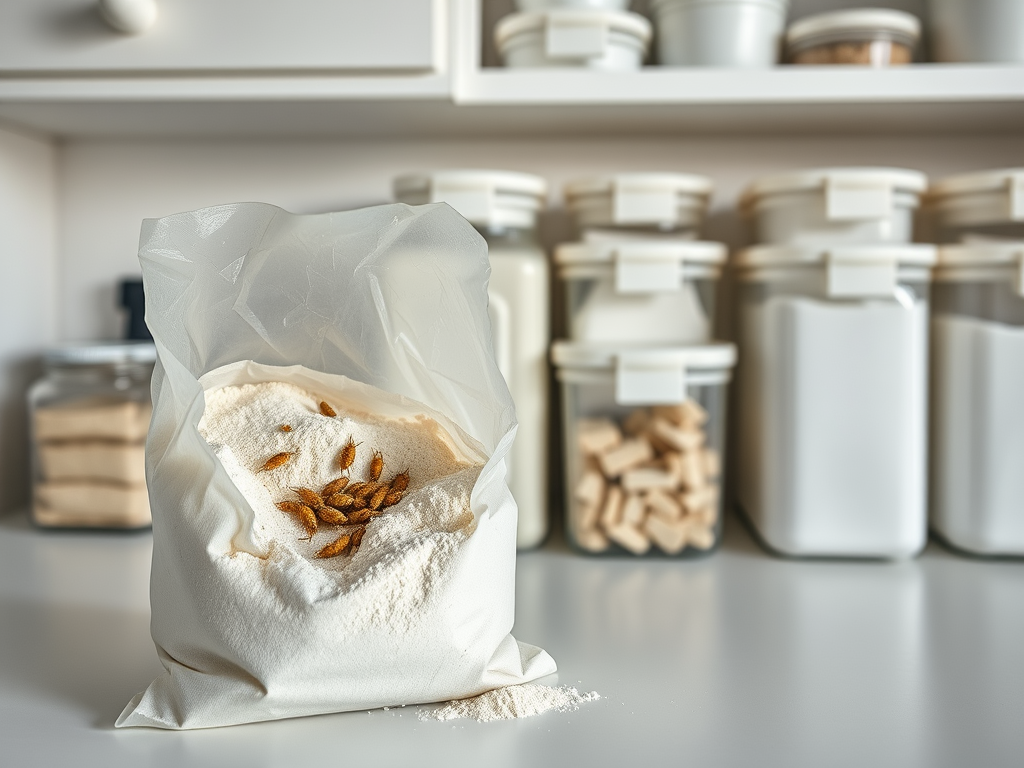Many homeowners face the unwelcome surprise of discovering weevils in their pantries. These tiny pests can cause significant damage to stored foods, especially grains. Understanding how to identify weevils and recognizing the signs of an infestation can help protect your home from these voracious little eaters. With an increased awareness of their habits and habitats, you can spot issues early and take proactive measures to prevent their proliferation. This article will guide you through the different types of weevils, how to identify infestations, and practical prevention strategies to keep your home safe. From visible signs to effective storage techniques, we will cover everything you need to know to combat these kitchen invaders.
Understanding Weevils

Weevils are fascinating creatures that belong to the family Curculionoidea, with thousands of species worldwide. Typically small in size, they have elongated snouts, which distinguish them from other beetles. Their ability to invade stored food products makes them infamous among homeowners. Weevils lay eggs in food sources, culminating in damaging infestations as larvae consume the contents. Homeowners often find themselves battling these unwanted guests, and effective identification is key to managing infestations promptly. Knowing their life cycle extends your vigilance, allowing you to act decisively when the need arises.
Common Types of Weevils

Several types of weevils can invade your home. Here are the most common species to be aware of:
- Rice Weevil: Small and dark, these weevils primarily infest grain products like rice and flour.
- Granary Weevil: Slightly larger than the rice weevil, their preference for grain often leads to extensive damage.
- Peanut Weevil: As their name suggests, they primarily infest peanuts but may affect other legumes.
Each type has unique characteristics, helping homeowners identify which weevils they may be dealing with. Understanding the specific breeds allows for more tailored treatment options. Different weevils also have preferences for certain food types, so identifying the type of weevil can provide essential information about treating an infestation. Observing their behaviors and habitats can further enhance your ability to manage their presence effectively.
Signs of a Weevil Infestation
Detecting weevils early can save you from a full-blown infestation. Here are some key indicators to check regularly:
- Visible Damage: Inspect food packaging for small holes created as weevils burrow through materials.
- Presence of Live or Dead Weevils: Active adults can often be seen, while dead ones might accumulate in food containers.
- Weevil Larvae: Look for small, white larvae lurking in dry goods, especially grains and flour.
Paying attention to these signs will empower you to act before the situation escalates. Being proactive is key; it helps in maintaining a pest-free environment. If you find any of these indicators, immediate action should be taken to mitigate further damage. Noticing the onset of these signs can save not only your food supplies but also your peace of mind.
| Type of Weevil | Preferred Food Source | Size |
|---|---|---|
| Rice Weevil | Rice, flour | 2.5-4mm |
| Granary Weevil | Grains | 3-5mm |
| Peanut Weevil | Peanuts, legumes | 4-6mm |
Where Weevils Are Typically Found
Weevils favor locations where they have easy access to food sources. The most common areas where infestations occur include:
- Kitchen Pantries: Due to the abundance of stored food, this is often where infestations begin.
- Dry Goods and Grains: Rice, flour, pasta, and other dry goods serve as prime targets for weevils.
- Old Furniture or Cloth: Some weevil species prefer fibrous materials for nesting.
Being aware of these locations will help you take preventive action before infestations begin. Frequent inspection of these areas guards against establishment and growth of weevil populations. Regular checks can help uncover any burgeoning issues, allowing for swift intervention. Taking these steps significantly lessens the likelihood of encountering these unwanted guests.
Prevention Methods
Preventing a weevil infestation is far easier than dealing with one after it establishes itself. To keep these pests at bay, consider implementing the following strategies:
- Regular Cleaning: Maintaining cleanliness in pantry areas is essential; remove crumbs and spills routinely.
- Proper Storage: Utilize airtight containers for all dry food products to deter weevils from accessing food sources.
- Inspect New Purchases: Always check grains and dry goods for weevils before bringing them into your home.
Incorporating these simple yet effective strategies can significantly reduce the risk of having weevils in your home. Prevention is the cornerstone of pest management, and awareness is the first step. By ensuring your pantry is clean and your food is sealed appropriately, you create a hostile environment for weevils. Over time, these prevention methods become a habit that fortifies your defenses against pests.
Conclusion
Identifying and preventing weevil infestations requires a blend of knowledge and vigilance. By understanding the various types of weevils and recognizing the telltale signs of an infestation, homeowners can take action before a small issue escalates into a significant problem. Proactive measures, whether cleaning, inspecting, or storing foods correctly, are your best allies in this battle. A few consistent practices can protect your pantry and food supplies effectively. Remain observant, stay informed, and enjoy a pest-free kitchen!
Frequently Asked Questions
- What are weevils? Weevils are small beetles known for infesting stored food products, particularly grains.
- How can I tell if I have a weevil infestation? Look for small holes in food packaging, live or dead weevils, and larvae in your grains.
- What should I do if I find weevils in my food? Dispose of the infested food and clean the area thoroughly to remove any remnants.
- Are weevils harmful to humans? While weevils do not pose direct health risks, consuming infested food is not advisable.
- How can I prevent weevils from entering my home? Store dry foods in airtight containers and regularly clean pantry areas to deter infestations.


